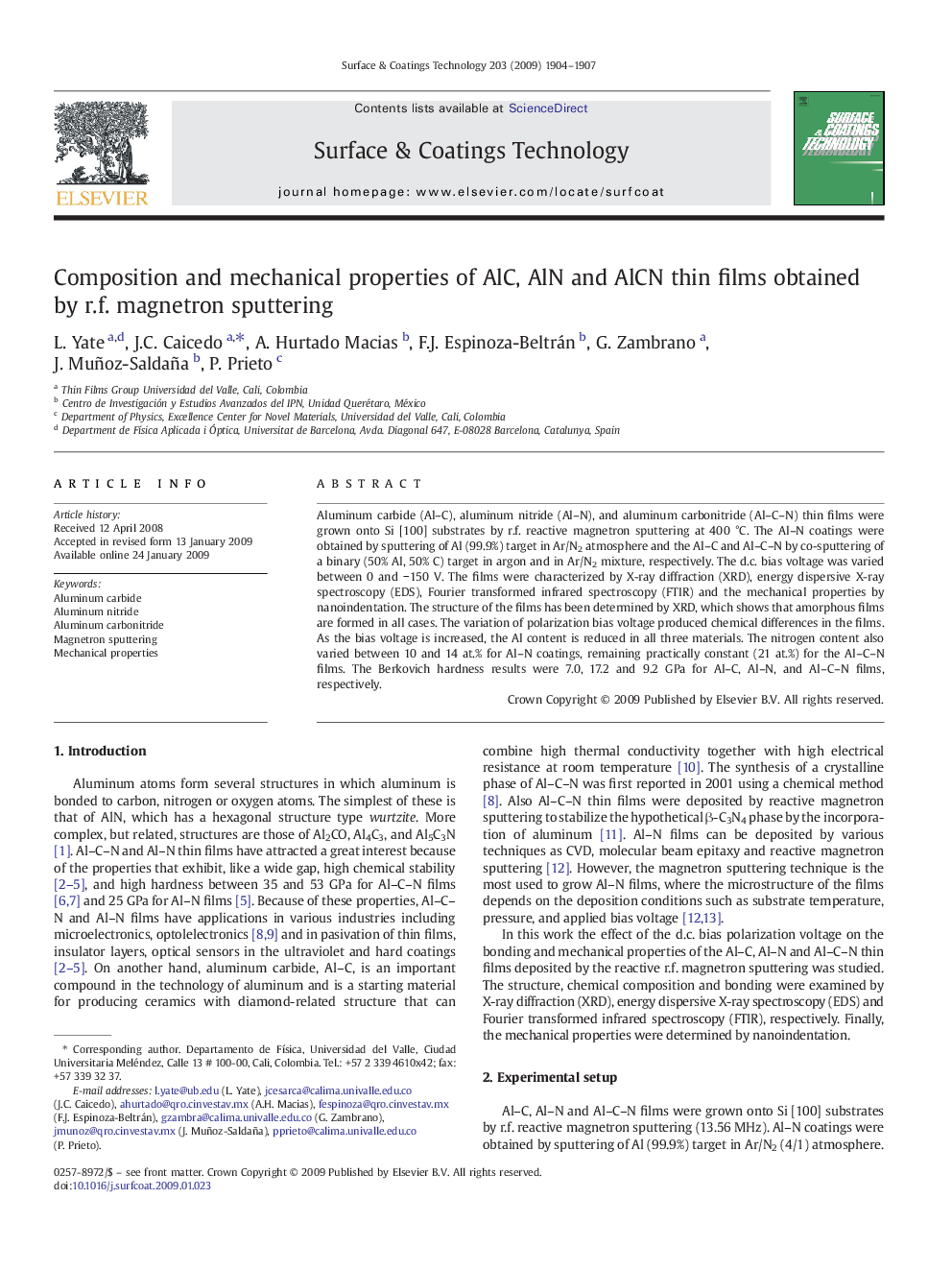| Article ID | Journal | Published Year | Pages | File Type |
|---|---|---|---|---|
| 1659798 | Surface and Coatings Technology | 2009 | 4 Pages |
Aluminum carbide (Al–C), aluminum nitride (Al–N), and aluminum carbonitride (Al–C–N) thin films were grown onto Si [100] substrates by r.f. reactive magnetron sputtering at 400 °C. The Al–N coatings were obtained by sputtering of Al (99.9%) target in Ar/N2 atmosphere and the Al–C and Al–C–N by co-sputtering of a binary (50% Al, 50% C) target in argon and in Ar/N2 mixture, respectively. The d.c. bias voltage was varied between 0 and − 150 V. The films were characterized by X-ray diffraction (XRD), energy dispersive X-ray spectroscopy (EDS), Fourier transformed infrared spectroscopy (FTIR) and the mechanical properties by nanoindentation. The structure of the films has been determined by XRD, which shows that amorphous films are formed in all cases. The variation of polarization bias voltage produced chemical differences in the films. As the bias voltage is increased, the Al content is reduced in all three materials. The nitrogen content also varied between 10 and 14 at.% for Al–N coatings, remaining practically constant (21 at.%) for the Al–C–N films. The Berkovich hardness results were 7.0, 17.2 and 9.2 GPa for Al–C, Al–N, and Al–C–N films, respectively.
